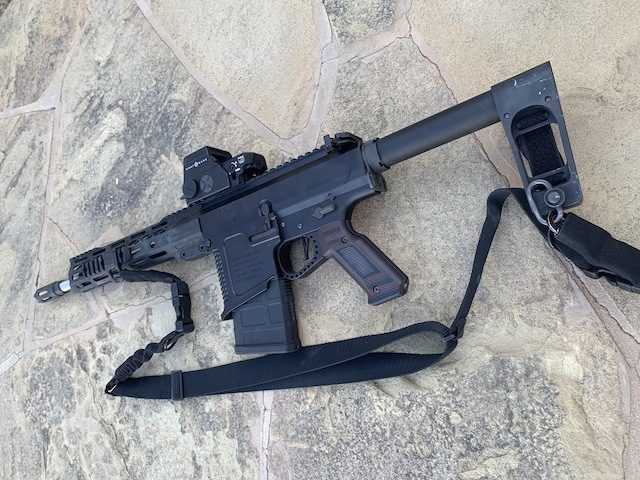A three-judge panel of the United States Court of Appeals for the Fifth Circuit handed down a decision Tuesday reversing a district court order rejecting a preliminary injunction against the Bureau of Alcohol, Tabacco, Firearms, and Explosives’ (ATF) pistol brace rule and remanding the case to the district court for reconsideration.
The three judges were Ronald Reagan appointee Jerry E. Smith, Donald Trump appointee Don Willet, and Barack Obama appointee Stephen A. Higginson.
They did not weigh the constitutionality of the pistol brace rule, seizing instead on the plaintiff’s claim that it violated the Administrative Procedure Act (APA).
The Firth Circuit panel ruled two to one to reverse the district court order, remanding the case to the district court for reconsideration. In so doing, it noted that the district court had treated the ATF’s rule as “interpretive” rather than “legislative” in nature. Consequently, APA guidelines do not apply to a rule that is “interpretive” in nature.
However, the Fifth Circuit panel noted that the ATF’s rule is “legislative” in nature, which means the APA guidelines do apply:
We move on to plaintiffs’ claim that the Final Rule violates the APA’s procedural and substantive requirements. On that front, plaintiffs establish a substantial likelihood of success on the merits. The ATF incorrectly maintains that the Final Rule is merely interpretive, not legislative, and thus not subject to the logical-outgrowth test. The Final Rule affects individual rights, speaks with the force of law, and significantly implicates private interests. Thus, it is legislative in character.
The Fifth Circuit panel zeroed in on the differences between the ATF’s Proposed Rule and the agency’s Final Rule, noting that the difference between the proposed version and the finalized rule “violates the APA.” It pointed out that “the Proposed and Final Rule must be alike in kind so that commentators could have reasonably anticipated the Final Rule.”
Instead, the panel indicated, “the Notice of Proposed Rulemaking (NPRM) and the Final Rule bear little resemblance to one another.”
It noted that the differences between the NPRM and the Final Rule are so stark that “it is nigh impossible for a regular citizen to determine what constitutes a braced pistol, and outside of the sixty contemporaneous adjudications that the ATF released, whether a specified braced pistol requires NFA registration.”
The case is Mock v. Garland, No. 23-10319, in the United States Court of Appeals for the Fifth Circuit.
WATCH: AWR Hawkins on How Federal Agencies Are Weaponized to Target Second Amendment
Video Source: ahawkinsAWR Hawkins is an award-winning Second Amendment columnist for Breitbart News and the writer/curator of Down Range with AWR Hawkins, a weekly newsletter focused on all things Second Amendment, also for Breitbart News. He is the political analyst for Armed American Radio and a Turning Point USA Ambassador. He was a Visiting Fellow at the Russell Kirk Center for Cultural Renewal in 2010, a speaker at the 2023 Western Conservative Summit, and he holds a Ph.D. in Military History, with a focus on the Vietnam War (brown water navy), U.S. Navy since Inception, the Civil War, and Early Modern Europe. Follow him on Instagram: @awr_hawkins. You can sign up to get Down Range at breitbart.com/downrange. Reach him directly at awrhawkins@breitbart.com.

COMMENTS
Please let us know if you're having issues with commenting.